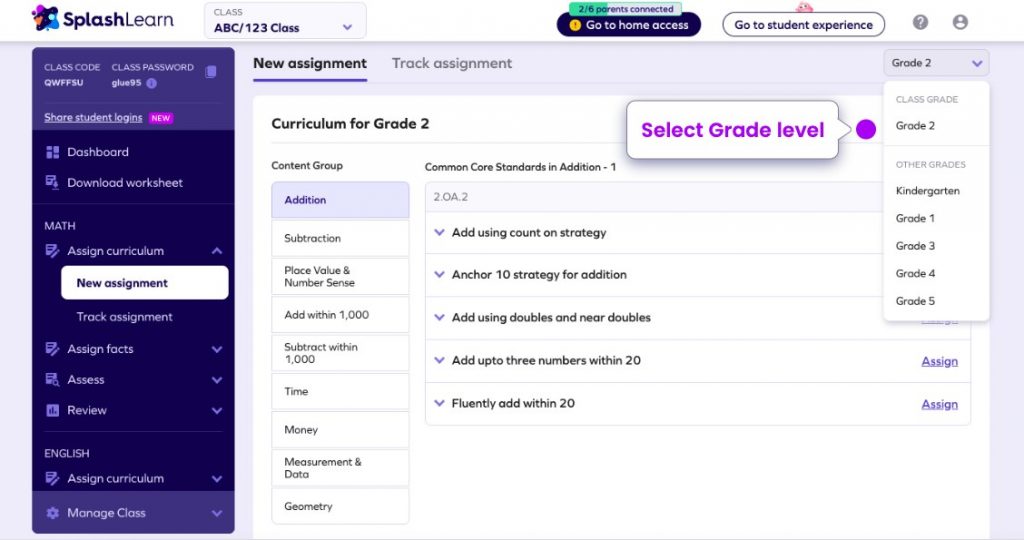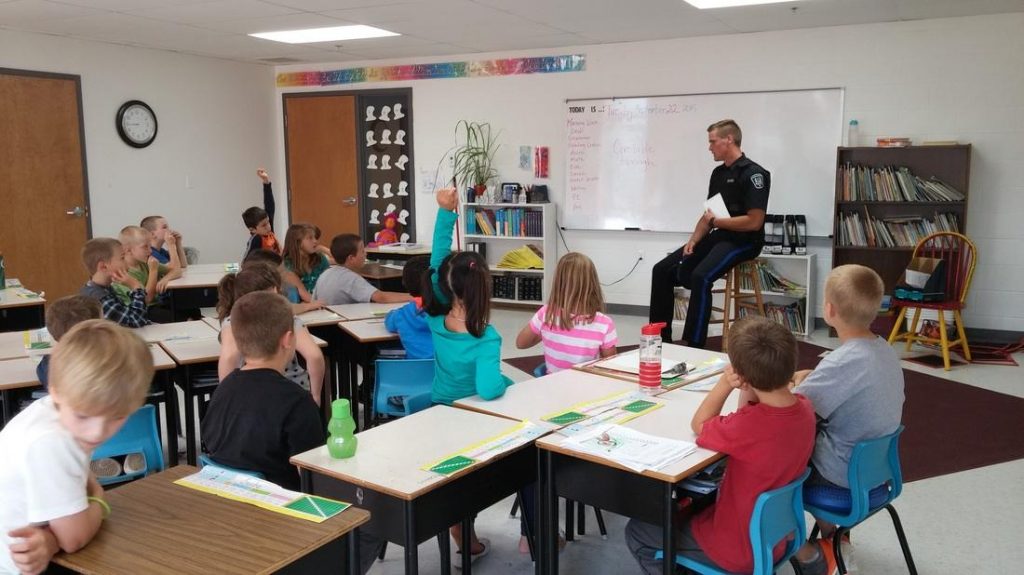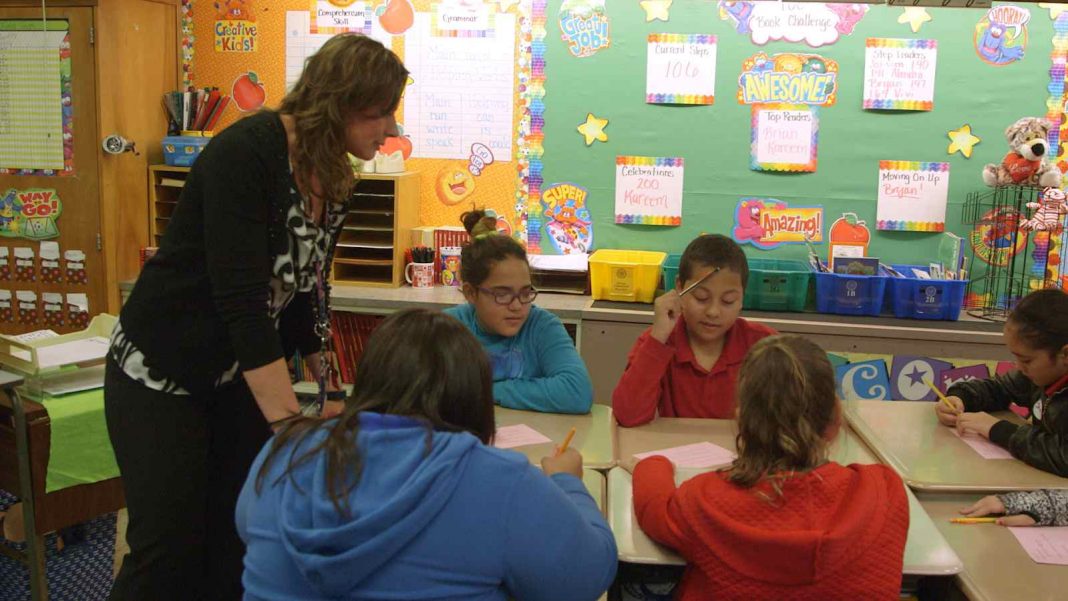Teaching 5th grade is a journey filled with unique challenges and joyful discoveries. In my six years of experience in this role, I’ve gathered a wealth of insights and strategies that have proven effective in the classroom. If you’re searching for ideas on how to teach 5th grade, you’re in the right place.
Math & ELA | PreK To Grade 5
Kids see fun.
You see real learning outcomes.
Watch your kids fall in love with math & reading through our scientifically designed curriculum.
Parents, try for free Teachers, use for free
This blog is designed to share practical tips and techniques I’ve learned and honed over the years. Whether you’re a new teacher or a seasoned educator looking for fresh ideas, these strategies will help you create a vibrant, engaging, and educational experience for your 5th graders. Let’s dive in!
15 Subject Wise Tips for Teachers to Teach 5th Grade Kids
5 Tips to Teach 5th Grade Math
1. Simplifying Complex Concepts
Math can be challenging for 5th graders as they encounter more complex topics. Break these concepts into smaller, manageable parts. Use real-life examples to make it relatable. This approach helps demystify tough topics and builds confidence in their math skills.
Example:
- Use everyday objects to explain fractions (like cutting a pizza into slices).
- Introduce decimals with money concepts (comparing dollars and cents).
- Demonstrate geometry concepts using paper folding for shapes.
- Play games to break complex concepts into small concepts.
Play these games to break complex topics into bite-sized lessons:
2. Real-world Applications
At this stage, students should understand the practical application of math. While teaching 5th grade math, introduce problems that relate to real-life scenarios, like budgeting a family trip or measuring ingredients for a recipe. This makes math more engaging and relevant to their everyday lives.
Example:
- Calculate the total cost of items during a classroom ‘market day’.
- Plan a virtual trip: budgeting for tickets, food, and souvenirs.
- Measure and record rainfall over a week to practice data recording and analysis.
3. Integrating Technology in Math Learning

Using technology in the classroom can transform how 5th graders learn math. Digital tools and platforms offer interactive and personalized learning experiences, making math fun and engaging. They also provide teachers with resources to enhance their lessons and track student progress.
Example:
SplashLearn is a prime example of an effective digital tool for teaching math. It’s specifically designed to make learning math a fun and interactive experience for 5th graders. The platform offers a variety of games and worksheets that cover a wide range of math topics. These activities are structured in bite-sized lessons that make complex concepts easier to understand and retain.
SplashLearn adapts to each student’s learning pace, providing personalized challenges that keep them engaged. Its interactive interface makes learning math less intimidating and more enjoyable.
An added advantage of SplashLearn is that it’s completely free for teachers. This makes it an accessible tool for classrooms, ensuring that every student can benefit from this innovative way of learning math.
4. Encouraging Problem-solving Skills
Problem-solving is a key math skill. Present challenges that require students to think critically and come up with solutions. Encourage them to approach problems from different angles and not fear making mistakes, which is crucial to learning.
Examples:
- Present word problems that require multi-step operations to solve.
- Set up math scavenger hunts where clues lead to math problems that need solving.
- Use puzzles and brain teasers that involve mathematical reasoning.
5. Regular Practice and Review
Consistency is key to mastering math skills. Regular practice helps solidify concepts. Use a variety of exercises, from worksheets to online quizzes, to keep practice sessions lively and ensure a comprehensive understanding of the material.
Example:
- Weekly math quizzes on different topics.
- Math journals where students reflect on what they’ve learned and practice problems.
- Group projects that require applying various math skills to solve.
- Incorporating a variety of math worksheets is a great way to provide practice and can be used for homework, classwork, or as additional support for students who need it. They offer structured practice, helping students reinforce what they’ve learned and build their confidence in math.
Related Reading: Most Important Math Concepts Kids Learn in 5th Grade
5 Tips to Teach 5th Grade Language Arts
1. Vocabulary Development
Expanding vocabulary is one of the most essential tips for 5th graders. It aids in reading comprehension and improves writing quality. Introduce new words in context and use engaging activities to reinforce learning.
Example:
- Vocabulary word of the day or week.
- Word games like crossword puzzles or word searches.
- Using new vocabulary words in creative writing assignments.
Begin with these activities to develop vocabulary:
Related Reading: Best Vocabulary Activities for Kids: Word Wizards
2. Comprehension Strategies
Teaching students how to understand and analyze what they read is crucial. This involves discussing themes, characters, and plot and drawing connections to real life. Comprehension strategies improve critical thinking and set a foundation for advanced learning.
Example:
- Group discussions on book themes.
- Creating story maps or timelines.
- Comparing and contrasting characters or events.
Here are some worksheets to enhance comprehension skills that cover inefering, compare and contrast, comprehending and character analysis of the story:
3. Writing Workshops
Writing is a key component of language arts in the 5th grade. Workshops help students improve their writing skills through practice and peer feedback. These sessions should focus on structuring ideas, using descriptive language, and developing a personal writing style.
Example:
- Weekly creative writing prompts.
- Peer review sessions where students give and receive constructive feedback.
- Journaling activities to encourage personal expression.
4. Encouraging Reading Variety
As a 5th-grade teacher, it’s crucial to encourage students to explore a variety of reading materials. At this stage, broadening their reading horizons helps develop critical thinking and exposes them to different writing styles and genres. Diverse reading materials also enhance vocabulary and comprehension skills.
Example:
- Host a monthly book club or reading circle.
- Create a classroom library with a range of genres.
- Assign books that align with current events or historical periods being studied.
5. Incorporating Drama and Public Speaking
Alt text: Vector image of a debate going on
Drama and public speaking activities enhance language skills and build confidence. They allow students to express themselves creatively and improve their speaking and listening skills.
Example:
- Organizing class plays or skits.
- Holding debate sessions on current topics.
- Encouraging oral presentations on books or projects.
5 Tips to Teach 5th Grade Science
1. Hands-on Experiments and Demonstrations
One of the most effective methods in how to teach 5th grade science is through hands-on experiments. These activities make abstract concepts tangible and foster a deeper understanding. Encourage students to observe, predict, and draw conclusions from these experiments.
Example:
- Conduct simple chemistry experiments like vinegar and baking soda reactions.
- Explore physics by building small parachutes to learn about gravity.
- Study plant growth by planting seeds and tracking their development.
Related Reading: Fun and Easy Science Experiments for Kids
2. Connecting Science to Everyday Life

Relating science concepts to real-world scenarios helps students understand their relevance. This approach makes science less intimidating and interesting, showing how it’s part of daily life.
Example:
- Discuss how weather patterns affect the environment and everyday activities.
- Explore energy conservation at home or in school.
- Identify and discuss the science behind common household items.
3. Encouraging Scientific Inquiry

Promoting curiosity and the desire to explore is key to 5th grade teacher ideas. Teach students to ask questions, form hypotheses, and seek answers through observation and research.
Example:
- Encourage students to develop their science fair projects.
- Organize Q&A sessions where students can ask and answer science-related questions.
- Use open-ended questions in class discussions to stimulate critical thinking.
4. Encouraging Collaboration in Scientific Projects

Collaborative projects in science help students learn teamwork and problem-solving skills. Working together on experiments or research projects allows them to share ideas and learn from each other, fostering a cooperative learning environment.
Example:
- Group projects to build simple machines or ecosystems.
- Collaborative research on environmental issues and presenting findings.
- Science club activities where students work together on experiments or science-related events.
5. Field Trips and Guest Speakers

Field trips and guest speakers bring science to life, showing its application in the real world. They provide valuable experiences that textbooks alone cannot offer.
Example:
- Organize trips to science museums or nature reserves.
- Invite professionals like meteorologists or biologists to speak in class.
- Arrange visits to local observatories or planetariums.
Related Reading: Best Science Activities for Curious Preschoolers
10 General Tips to Teach 5th Grade Kids
1. Understanding Developmental Stages
When figuring out how to teach 5th grade, it’s crucial to consider their developmental stage. Fifth graders are at a point where they’re developing greater independence and critical thinking skills. Acknowledging and supporting this growth can make your teaching more effective.
2. Creating a Positive Learning Environment
The atmosphere in your classroom sets the tone for learning. A positive, inclusive environment encourages students to express themselves and take risks in learning. It’s about making each child feel valued and part of a learning community.
3. Building Relationships
Teaching fifth graders is not just about imparting knowledge; it’s also about building relationships. By knowing your students’ interests, strengths, and challenges, you can tailor your teaching to meet their individual needs.
4. Incorporating Different Learning Styles
Every student learns differently. Some may grasp concepts better through visuals, while others prefer hands-on activities or listening to explanations. Mixing up your teaching methods can help reach all learners.
5. Classroom Management Techniques
Effective classroom management is key in teaching fifth graders. Clear classroom rules, consistent routines, and fair consequences help maintain order and ensure every student can learn without distractions.
Related Reading: Best Classroom Management Tools
6. Encouraging Critical Thinking
Critical thinking is a skill that fifth graders are beginning to develop. Encourage them to ask questions, think deeply, and analyze information. This not only enhances their learning but also prepares them for real-world challenges.
Related Reading: Fun Problem-Solving Activities for Growth Mindset
7. Fostering Independence
One of the goals in how to teach 5th grade is to foster independence in your students. This means allowing them to take charge of their learning, make decisions, and learn from their mistakes in a supportive environment.
8. Incorporating Group Work
Group work is excellent for teaching teamwork and collaboration. It allows students to share ideas, learn from each other, and develop social skills that are crucial at this age.
Related Reading: Best Indoor and Outdoor Team Building Activities for Kids
9. Continuous Assessment and Feedback
Regular assessments and feedback help you monitor your student’s progress and address learning gaps. It also helps students understand their strengths and areas for improvement.
10. Parent Involvement
Engaging parents in the educational process is beneficial. Regular communication, parent-teacher meetings, and involvement in school activities can create a supportive learning environment for the students.
Conclusion
Remember that the key to how to teach 5th grade effectively lies in being adaptable and responsive to your student’s needs. Each child is unique, and your approach should be flexible enough to accommodate those differences. Keep exploring new strategies, stay curious about your students’ perspectives, and, most importantly, enjoy the journey of teaching and learning alongside your young learners.
Related Reading: What Do You Learn in 5th Grade
Frequently Asked Questions (FAQs)
What do you teach first in 5th Grade?
In 5th grade, it’s often effective to start with a review of key concepts from 4th grade. This can include basic math operations, reading comprehension skills, and foundational science concepts, setting a solid groundwork for the year’s curriculum.
What Subjects should you teach to 5th Grade Kids?
Essential subjects for 5th graders include Math, Language Arts, Science, and Social Studies. Additionally, incorporating Art, Physical Education, and basic Technology skills can provide a well-rounded education.
How can I make the class more Engaging?
Integrating technology can greatly enhance class engagement. Use educational apps for interactive learning, incorporate multimedia presentations for visual appeal, and encourage digital project creation to make learning more dynamic and interactive.


































